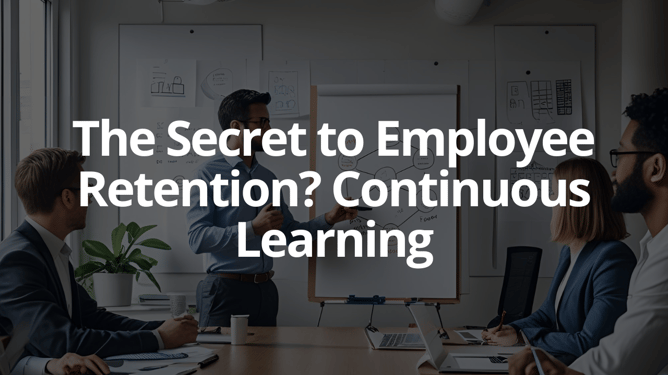Learning to Lead a Multigenerational Workforce
Podcast: Play in new window | Download
Subscribe: RSS
Hi there everyone, this is Tom Hallett from the Learn Grow Succeed Podcast.
In today’s podcast, I’ll be taking a look at multigenerational workforces – exploring what we mean by the term multigenerational – and looking at who these individuals are, what makes them tick and ultimately how we can help them to perform to the best of their ability.
I’ll get into that in just a moment.
First, though, if you are new here… welcome!
By the way, you’ll always find a transcription of our podcast over on the Excel Communications website.
Over the last few years we’ve run many leadership training webinars and if you would like access to these please visit here.
Our website is also full of resources to help you develop your leadership capability, so remember to sign up to our email updates if you would like to continue to develop your learning journey. You can also follow us on LinkedIn and Facebook.
So, without further ado, I’d like to use today’s podcast to talk about the increasingly popular topic of our multigenerational workforces.
We live in a disruptive age – technology, globalisation and demographics are working to overturn traditional ways of working. Additionally, the changing behaviours of customers are transforming the business landscape.
For leaders, embracing these changes and engaging a thriving, age-diverse workforce can enhance the potential of individuals, enabling companies to remain agile, relevant and competitive in shifting market dynamics.
For the first time, we have a workforce made up of five generations: from Baby Boomers to Gen Z, leaders are managing age groups who have very different motivators, ideas and drivers, and these multigenerational teams are becoming more prevalent in the workplace.
So what do we mean by ‘multigenerational’?
The Multigenerational Team
Without wanting to slip into generational stereotypes, a multigenerational team can be divided up into age-specific groups.
Just be careful to remember that there are exceptions to the rule – so, not all baby boomers will enjoy a traditional hierarchy, and not all Millennial’s want to work from home!
The following descriptions are only a guideline of characteristics – and not an in-depth psychological portrait of your team members!
The older members of your team are likely to be what’s referred to as the Baby Boomers – born the mid-1940s to 60s – when workplaces were very different from those of today. More structured and hierarchical, Boomers grew up in a time that saw overcrowded schools and intense competition for first jobs.
This generation is often seen as relishing hard work, they are often loyal to the company they work for, and their vast experience in the workplace can make them an asset to your team. However, they can also appear critical of younger generations who they see as having a lack of work ethic and commitment.
Gen X, who followed the Boomers, tend to have a more relaxed approach to work. They are the start of the generations who have grown up with technology, mobile apps and innovative platforms. They tend towards being autonomous and resourceful – Google is their ‘go-to’ for information!
In the workplace, they are independent, unimpressed by authority and prefer a hands-off management style.
Possibly the most well-known of all the generations, Gen Y, or Millennials, have been accused of being narcissistic and lazy – but they have many admirable characteristics. They are creative, agile and committed to ideas that inspire and ignite their enthusiasm.
This generation is going to be critical as we move through the next decade. Ernst & Young and Accenture have reported that Millennials already make up over two-thirds of their entire employee base, and by 2025 they are expected to make up 75 per cent of the global workforce.
Gen Z – the next most technologically advanced group – are now entering the world of work. Raised on the internet and social media, they are considered to be the most ethnically diverse group and embrace diversity and inclusion.
Dubbed ‘millennials on steroids’ as they hold many of the same values as the generation before them – they are likely to value work-life balance and a company ethos that is in harmony with their own – early research suggests that Gen Z is more pragmatic, more money-conscious, and more entrepreneurial than their millennial counterparts.
With diverse beliefs and working styles, you can see how an age-diverse team could present challenges for a leader who needs to manage a multigenerational team.
By the way, if you’d like to learn more about the individual traits of multigenerational groups; head over to our report on this topic. I’ll drop a link to this in the transcription of this post.
How Can The Generations Learn From Each Other?
There’s been a lot of discussion about the ‘problems’ associated with managing a multigenerational workplace, and it’s easy to slip into the negatives – but what about the positives?
What can different generations learn from each other?
The intergenerational pipelines of wisdom flow both ways – it’s not just Boomers teaching Millennials how to do things – it works the other way around too.
With around 40 per cent of UK employees currently working for a manager who is younger than they are – leaders could find themselves managing older colleagues – so everyone must acknowledge the two-way flow of knowledge and experience.
As I’ve already mentioned, Millennial’s make up a high proportion of the workforce, so It’s inevitable that they will increasingly be taking on leadership positions
One advantage they bring with them is their digital intelligence. This covers the social, emotional and cognitive abilities that enable individuals to face the challenges and adapt to the demands of life in the digital world.
But although Millennials have digital intelligence, they sometimes lack the emotional intelligence that comes with age and experience. Metric-driven Millennials and Gen Z can, therefore, benefit from knowledge sharing with more long-standing employees to underpin their abilities.
Promoting a mutual mentorship environment can help you create a feedback loop where all team members can learn from each other’s area of experience, and consequently grow and learn career-wise.
By bridging the generational borders, you can enable wisdom to flow in both directions, creating the right conditions to foster smart growth – a new sharing economy.
We now have five generations working collectively, and with such age-diverse teams, surprisingly, many companies who embrace diversity and inclusion have failed to acknowledge age as an area for particular mention: in fact, only 8% currently have an expanded diversity strategy that includes age.
Yet all the information points to the fact that age-diverse teams work better.
So, perhaps now’s the time to see the positives that each generation brings to the workplace and use these to instil an environment of mutual knowledge-sharing that recognises diverse strengths.
Until next time!
The Excel Communications Team
P.S. If you would like to discuss any of your other learning & development challenges, book in your discovery call.
About Excel Communications
LEARN, GROW, SUCCEED
Excel Communications is a learning and development consultancy based near London in the UK. For more than 30 years, we have been collaborating with clients across the globe.
Partnering with Excel empowers you to evolve your people and business by fuelling a love for learning.
We work with you to create unforgettable, customised learning experiences to achieve your vision of success and growth, with tangible results.
We have a team of expert trainers delivering programmes across five continents in multiple languages. Call us now on +44 (0) 1628 488 854.
Important
If you would like to watch our leadership masterclass recordings, you can access the latest leadership complimentary guide here.




